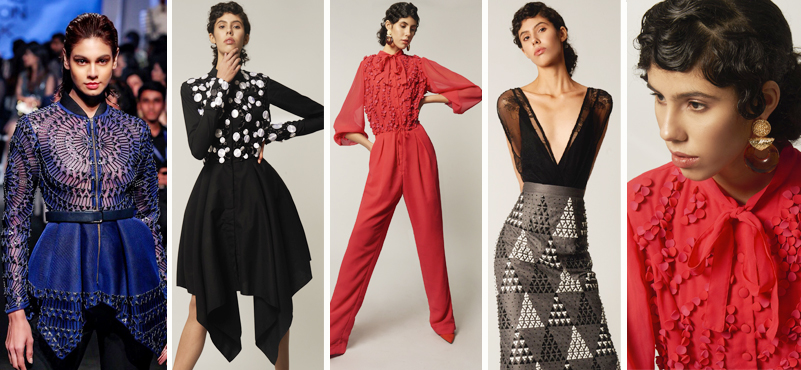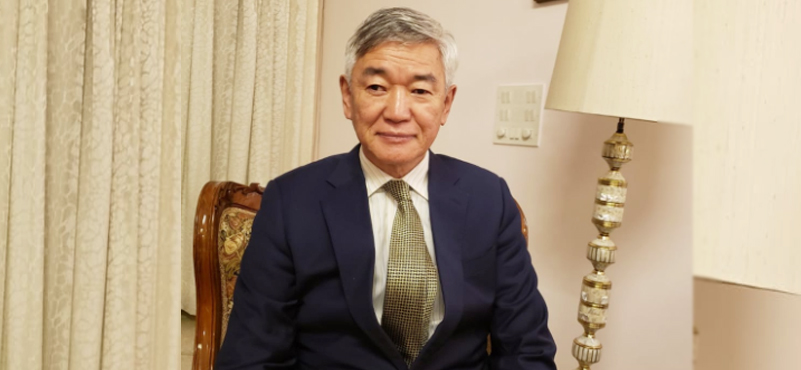If Necessity was one important criteria for innovation, Covid impact has just proved that for the Indian fashion industry. Read what some of our leading designers have been doing during the lockdown era?
Indian designers were going global. New markets were opening up. Sales were on an upward trajectory. The Indian design scene was booming. And then the pandemic hit.
The world as we knew it, changed forever. And along with it, so did our wardrobes. Our spiffy tuxedos and sparkling gowns lost pride of place in our closets, only to be replaced by pyjama sets and flowy kaftans. The sherwanis and sarees we kept with such care were relinquished to the back of our cupboards and sweatpants climbed the priority scale.
And no one felt the impact of that more than the Indian designers. With stores being shut and a large number of staff to take care of, the losses began mounting. But India’s designers have always been a tough breed. They’ve never been one to back down from a fight. So, they switched to new and innovative methods to meet the demands of the new world.
The Immediate Impact Of The Lockdown
Designer Kresha Bajaj says that the biggest challenge for her was to retain her workforce at a time when sales were at an all-time low. While the brand took a hit, she was also conscious of the fact that her workers were impacted on a personal level. She says, “my entire team of karigars (craftsmen) and artisans, who are the oil that powers our brand, left for their hometown. For some time, work was unorganized and chaotic as fear of the unknown loomed above us. My flagship studio (in Mumbai) was empty and closed for several months due to which we had little to almost no sales during that period.”
Designer Payal Khandwala says that the biggest impact was psychological. That’s because the pandemic has made everyone wary of taking risks. The fear of an uncertain future has taken a toll on the mental health, as well as the business decision-making, of most designers.
Adapting To The New Normal
Changing the existing business model completely, that too from the safety of their homes, over virtual calls and zoom meetings, is no mean feat. Broken supply chains had to be re-established. Cash flow had come to a stop, in an industry that’s already (in)famous for delayed payments and running a fashion house certainly needs a steady flow of income. For a lot of designers, it was almost like starting afresh, but with the added baggage of a ton of overheads.
Kresha Bajaj says that it broke her heart but she had to reduce employee salaries for a few months. But she launched the ‘Care For Karigars’ initiative to help raise funds for craftsmen and weavers to tide them over this tough phase.
Designer Shubhika Sharma of Papa Don’t Preach by Shubhika, has spoken up on her social media handles saying that she has stopped giving discounts to customers, even if it means losing sales. And that’s because she feels that every penny of discount she gives takes away from her 75-member team. A customer discount impacts “the 23-year-old junior designer who’s looking for a raise, the karigar who wants a bonus to better his family’s standard of living, a 65-year-old masterji (tailor) who’s building his retirement corpus – the list is endless, the impact deep.”
Designer Anand Bhushan says that a lot of the business resources had to be reallocated and new ecosystems had to be created to keep production going while maintaining social distancing. As a result, the factory layouts and design studio setup had to be changed completely to comply with the new safety standards.
From Retail To E-tail
What the pandemic also did was shift the customers from in-store to online. Anand Bhushan, a favourite with Karisma Kapoor and Sonam Kapoor, emphasises that since the lockdown pulled down the shutters on stores, all energies were concentrated upon online sales. He says, “We kept the new line very price-conscious to make it more click friendly than hanger friendly.”
Pret Faces The Heat
But the mode of purchase is not the only thing that underwent a dramatic 180 degree turn. Even customer choices changed drastically. Anand Bhushan says that since no one stepped out for almost a year, there was a huge shift in the market from occasion wear to casual wear, and almost no one wanted to buy Pret anymore.
Kresha Bajaj, who designs both wedding wear and occasion wear, echoes his sentiment and says that Pret took a huge hit. “As a brand that sells Pret as well as Bridal, Pret has definitely taken a step back as people are not travelling for vacations at the moment nor having parties or celebrating any festivals.” The reason that the market for bridal wear remains buoyant is that clients are spending well, despite smaller wedding parties and limited gatherings, because a bride will always want to look like a bride, irrespective of whether she’s getting married at a small, intimate ceremony at home or having a grand celebration at a luxurious destination.
A Fashion Revolution
Among all the hardships that this pandemic wreaked upon the fashion industry, there may just be a silver lining. Being forced to stay at home, getting the time to take a good hard look at our lives and adapting to lower incomes combined together to change the way you and I, the consumers, look at fashion.
One immediate effect of the pandemic is that we have started looking at fashion from a more sustainable lens, and so have the designers. With more time on our hands, consumers started picking up DIY projects and upcycling old items. Products have been getting a new lease of life. Pieces are being recycled, revamped and re-used in different forms. Basically, we are starting to become more conscious about throwing away products.
For the designers, it also means brutally trimming down the excesses. There’s a need for stores to become more understated, for the paraphernalia around fashion to reduce and for the focus to return squarely on the pieces of clothing they are creating. ‘Experiential’ marketing has been rudely pushed out of the door by circumstances and may not be returning for a while.
Kresha Bajaj noticed the changing outlook when customers started focussing more on “timeless and classic pieces that could be passed down for generations to come.” She says that, while purchasing, people are becoming more aware about the reality of fast fashion as “frivolous purchases are dying down and people are starting to invest more in quality over quantity.”
The demand for seasonal clothing or ‘trending’ clothing has been on a gradual decline since the pandemic hit. Fashion cycles and colour forecasts have been put on the backburner. The focus is squarely on mindful fashion, sourced locally and effortlessly timeless. And the same could be seen at the first ever FDCI X Lakme Phygital Fashion Week.
‘Phygital’ Fashion Week
The Fashion Design Council Of India (FDCI) and Lakme recently organised the Phygital Fashion Week from 16 to 28 March 2021. For the first time in decades, traditional rivals FDCI and LFW came together to conduct a joint fashion week, but a ‘phygital’ one. Phygital is the combination of ‘physical’ and ‘digital’ and denotes a physical showcase of a designer’s collection but to a digital audience, for the sake of safety.
Designer Anamika Khanna opened the gala event with her collection called ‘Timeless The World’. Comfort fashion made an appearance on her runway in the form of fluid pyjamas, tunics and asymmetrical skirts.
Designer duo Pankaj and Nidhi also chose to embrace natural beauty in their collection ‘Kaleido’. Wavy hair or textured bobs gave the collection a relaxed vibe rather than the usual runway favourite sleek updos. Popping colours, geometric prints and very wearable fits ensured that their pieces would be far more relatable to the new post-pandemic audience.
Another iconic show at the FDCI X Lakme Phygital Fashion Week was Suneet Varma’s collection called ‘50 Shades Of Happiness’, inspired by Uttarakhand’s Valley Of Flowers. The vibrant-hued bridal couture collection focussed on bringing creative energy back into the business. The life-affirming collection was filled with intricate floral embroidery in a myriad shades.
The Phygital Fashion Week tries to move the consumer experience to a virtual space, with options of trying on designer wear through digital mirrors, all from within the four walls of a consumer’s home.
What’s Trending?
So, if you’re wondering what to add to your wardrobe to stay ‘in trend’, here’s the guide you need.
Focus on athleisure. The pandemic has put a sharp focus on smart athleisure that will take you from morning to evening. Versatility is the name of the game when it comes to garments. Designer Payal Singhal suggested a fun twist to the trend by pairing sports bras with sarees on the ramp.
The other thing that your wardrobe certainly needs is a bright splash of colour. Vibrant garments are a guaranteed head-turner. From Masaba’s quirky turquoise favourite to Anand Bhushan’s pop red, from Anamika Khanna’s neon shades to Suneet Varma’s bright corals, they all suggest that bright’s the way to be.
And if you thought bright colours were enough, think again. Bling is in, big-time. Suneet Varma’s show featured a jaw-dropping fuchsia sequined lehenga while Kresha Bajaj’s big sales are all shimmery pieces that ensure all eyes are on you.
There’s no denying the fact that India’s fashion industry has changed forever, and the covid-19 pandemic has been a catalyst in that change. What the road ahead from here is, remains to be seen. But one thing’s for sure: India’s designers are a tough breed. They are creative, they are quick to think and they are extremely determined to succeed. All the years of hard work they’ve put into establishing their brands will never go in vain. And while they can be down for a while, they will never be out of the game.




































